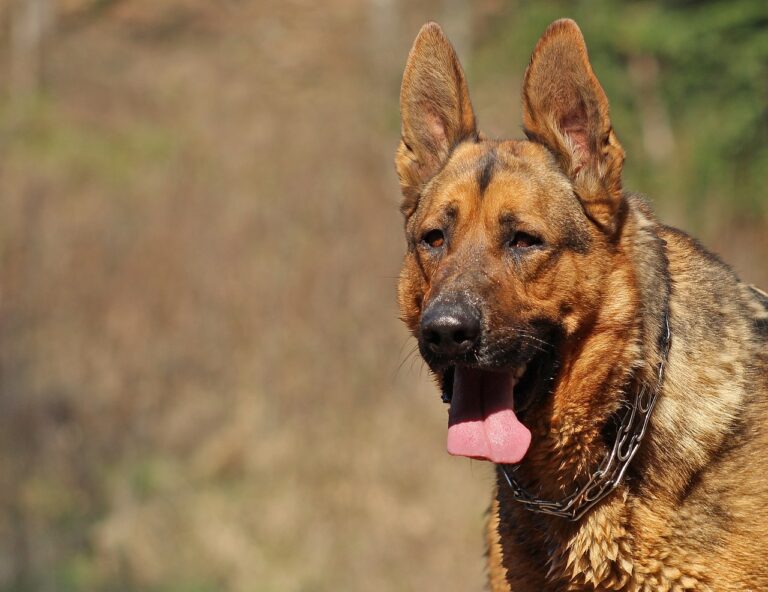
Well, by now you must have successfully mated your dog and taken good care of her during the whole pregnancy cycle. And now it’s time for her to deliver puppies and you are wondering if you need to help her deliver her puppies.
Well, yes and no. What do I mean? Well, female dogs like other animals will most of the time give birth on their own without you needing to do anything but give them emotional support. However, we recommend you be there on hand to help make the whole process seamless and easily notice and help her work through any birth complications.
Table of Contents
But you might be wondering what birth complications your dog could have. Or just what equipment you might need to help ensure you are the best help for your female dog. This topic will be covered to the best of my ability in this post.
3 Common Birth Complications in Female Dogs
Birth complications in dogs, also known as dystocia, can arise during the process of labor and delivery. These complications can be dangerous for both the mother and her puppies. Three common birth complications in dogs include:
Prolonged Labor
This occurs when the dog is in labor for an extended period, usually more than 24 hours, without any puppies being born. Various factors, including the size or position of the puppies, uterine inertia, or problems with the birth canal can cause prolonged labor. If not addressed promptly, it can lead to distress in the mother and puppies.
Malposition or Malpresentation
Malposition or malpresentation happens when a puppy is not in the proper position for birth. Normally, puppies should be positioned headfirst, but sometimes they can present breech (tail first), transverse (sideways), or with other abnormalities. This can result in difficulties during labor and may require veterinary assistance to reposition or deliver the puppies safely.
Obstruction or Dystocia
Obstruction or dystocia occurs when there is an obstruction in the birth canal, preventing the puppies from being born. This obstruction can be due to various reasons, such as a very large puppy, a malformed pelvis in the mother, or a uterine problem. Dystocia can be a life-threatening condition and requires immediate veterinary intervention to prevent harm to the mother and her puppies.
It’s important for you as a dog owner and breeder to be prepared for the possibility of birth complications and have a veterinarian’s contact information readily available in case of an emergency. Monitoring the mother’s progress during labor and recognizing signs of distress is crucial in ensuring the health and well-being of both the mother and her puppies.
3 Amazing Practices to Help Reduce/Detect Labour Complications in Dog
Although birth complications are something you as a dog owner and breeder wouldn’t wish for, you must know ways to detect them to take the right step to save both the life of your dog and puppies about to be born. That being the case, here are three great ways to easily detect birth complications in dogs.
Keep Track of Your Dog’s Pregnancy
The very first step to detecting dog pregnancy complications is keeping a perfect record of each stage of gestation and knowing when labor is likely to occur. This is very important because knowing exactly when labor and birth are likely to occur helps you prepare and be present when it happens. Only when you are pregnant will you be able to detect birth complications and act on it? For more info on how dog pregnancy works, check out our post on German Shepherd pregnancy stages.
Understand what Normal Dog Labour
Now you have to know what is normal during your dog’s labor and what is not. A normal dog labor consists of the following stages.
- Stage 1: Early Labor (Pre-labor): This stage can last 6-12 hours or even longer. During this time, the dog may exhibit signs of restlessness, nesting behavior, panting, and possibly a drop in body temperature. These are early signs that labor is imminent, but active contractions have not yet begun.
- Stage 2: Active Labor: Active labor begins when the dog starts having strong contractions and the puppies are being born. This stage usually lasts around 3-6 hours, but it can be quicker for some dogs. Each puppy should be born within 1-2 hours of the onset of strong contractions. If a puppy is not delivered within this timeframe, it may indicate a problem, and you should seek veterinary assistance.
- Stage 3: Delivery of Placenta: After each puppy is born, the mother will typically pass the placenta. This stage usually occurs within 15-30 minutes of delivering each puppy.
- Intermission: Between the birth of each puppy, there is often an intermission during which the dog may rest, clean her puppies, and eat. This rest period can vary in length.
- Stage 4: Completion of Labor: Labor is considered complete when all the puppies and placentas have been delivered, and the mother is settled with her litter. This stage can take several hours as well.
The duration of dog labor, also known as the whelping process, can vary depending on several factors, including the dog’s breed, age, size, and the number of puppies in the litter. On average, dog labor can last from 6 to 12 hours, but it can be shorter or longer in some cases.
3. Be Present and Observant
Now this is the most important step if you are to successfully detect birth complications in your dog. You must clear your schedule to be available during the whole delivery process. The goal of this is to easily detect and act accordingly in case there are any complications during the whole delivery process. It is always important to have the vet a call away just in case. An important thing to note is that kids could be stillborn and need to be revived. This could be caused due to fluids blocking your little pup’s airways. It’s important to suck out this air using a suction bulb syringe.
Four Important Tools You Might Need For Your Dog’s Labor
Several tools and supplies can be very helpful during dog labor and pregnancy to ensure the well-being of both the mother and her puppies. Here are three essential tools and supplies:
Whelping Box

A whelping box is a specially designed enclosure where the mother dog can give birth and care for her puppies. It provides a safe and comfortable space for the mother and her puppies, helping to contain them and prevent accidents. Whelping boxes typically have low sides for easy access, a heat source to keep the puppies warm, and a non-slip surface. They are a critical tool for ensuring the safety and well-being of the mother and her litter during labor and the early stages of puppy rearing.
Thermometer

Monitoring the mother’s body temperature can be a useful tool for predicting the onset of labor. A dog’s body temperature typically drops slightly (below 100°F or 37.8°C) within 24 hours of labor beginning. This drop is a sign that labor is imminent. A reliable thermometer can help you recognize this change and be prepared for the birth.
If you are looking for a good thermometer for your dog’s needs, I recommend this great thermometer from Amazon, not because it’s cheap, but because it is specifically designed for dog body heat.
Oxytocin Syringe
Oxytocin is a hormone that a veterinarian can administer to stimulate uterine contractions if labor is not progressing as it should. In some cases, when labor is delayed or stalled, an oxytocin injection may be necessary to facilitate the birth of puppies. This tool should only be used under the guidance and supervision of a veterinarian, as improper use can be dangerous.
Suction Bulb

A dog suction bulb syringe, often referred to as a “bulb syringe,” is a medical instrument used to clear mucus and other fluids from a dog’s airways, especially in puppies. It resembles a small, rubber or silicone bulb with a narrow, tapered tip on one end and a larger bulbous section on the other. This tool is commonly used for the following purposes. This tool will come in handy when puppies are born still or probably finding it difficult to breathe due to fluid getting stuck in their airways.
Additionally, while not a tool or supply, having a veterinary contact and access to emergency veterinary services is invaluable during dog labor and pregnancy. Your veterinarian can provide guidance, support, and emergency assistance in case of complications.
But what if your dog experiences stalled labor complications, what can you do to help before the arrival of your vet? Check out this article on stalled labor complications that I found helpful.



